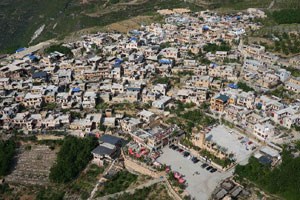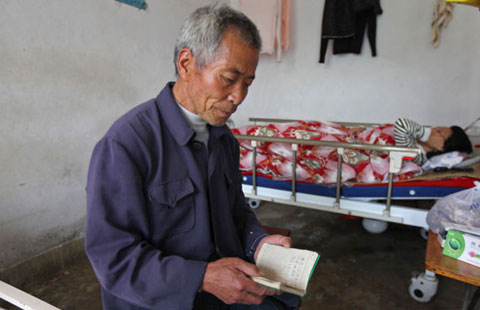North China gets early-warning system for quakes
Updated: 2014-05-13 07:49
By Huang Zhiling in Chengdu (China Daily)
|
||||||||
| Pupils mark disaster prevention day |
"The installation was carried out in schools, communities and township government buildings in cities after the Wenchuan earthquake in Sichuan province" in 2008, said Wang Dun, director of the Institute of Care-Life, a nongovernmental organization that conducts research on quakes.
The organization, in Sichuan's provincial capital of Chengdu, provided the technology for the system.
"If a quake hits any of the cities, others will receive early warnings from the system within seven seconds," Wang said
The system covers 130,000 square km in the Beijing and Tianjin municipalities as well as neighboring Hebei province and others nearby, Wang said.
The China Earthquake Administration said Wang's institute is a private organization and its quake predictions are not official, adding that China is planning to build a national earthquake monitoring and warning system in five years.
North China has seen recent violent seismic activity, including an 8.2-magnitude earthquake in 1976 that killed more than 242,000 people in Hebei, Beijing and Tianjin, one of the deadliest calamities in human history.
The country started to pay attention to early earthquake warnings after the 8.0-magnitude Wenchuan earthquake, which killed nearly 70,000 people. Many other countries, including Japan, Mexico and Turkey, launched such systems much earlier, said Chen Huizhong, a research fellow with the administration's Institute of Geophysics.
A real-time system gives warnings within seconds after a quake is possible and can save lives in quakes with a magnitude of 6.0 or higher because the warnings, transmitted via radio waves, travel faster than seismic waves.
"Radio waves travel at 300,000 kilometers per second, while seismic waves travel at 3 to 6 km/s. People who live in nearby areas may escape before the seismic waves arrive," said Chen, who has studied earthquakes his entire career.
Wang Dun, who is a native of Dazhou in eastern Sichuan, received his doctoral degree in theoretical physics from the University of Connecticut in the United States. Before his return to Sichuan in 2008 to establish the institute after the Wenchuan earthquake, he was a postdoctoral fellow of theoretical physics with the Austrian Academy of Sciences.
His institute has monitored quakes and sent more than 1,000 correct early warnings through the early-warning system since April 2010, he said.
"Five seconds after the magnitude-7.0 Lushan earthquake in Sichuan on April 20, 2013, the system sent the early warning. It was five seconds before seismic waves reached Ya'an (a city 33 km from Lushan county) and 28 seconds before seismic waves reached Chengdu," Wang said.
The Lushan earthquake killed 176 people and injured 12,614.
Fifteen provinces and municipalities have installed Wang's system, covering 910,000 sq km, he said.
huangzhiling@chinadaily.com.cn




 PLA Honor Guard debuts female members
PLA Honor Guard debuts female members
 Villager retraces begging journey to pay off debts
Villager retraces begging journey to pay off debts
 Confucius Inst launches Latin American hub
Confucius Inst launches Latin American hub
 Forum trends: You know you are in China when…(Part II)
Forum trends: You know you are in China when…(Part II)
 More than 10,000 dancers will parade in NYC
More than 10,000 dancers will parade in NYC
 Experts: Currency no big deal
Experts: Currency no big deal
 Chinese cut big African air deal
Chinese cut big African air deal
 Across America
Across America
Most Viewed
Editor's Picks

|

|

|

|

|

|
Today's Top News
Trip reflects militaries' will to seek closer ties
Russia says respecting choice of Donetsk, Lugansk
People in eastern Ukraine declare independence
Man detained for posting rumors on foreign website
Turkmen relations get horsepower
Legal strides made to end police torture
Alibaba hires ex-Treasury official
Chinese-teaching majors face bleak job prospects
US Weekly

|

|








